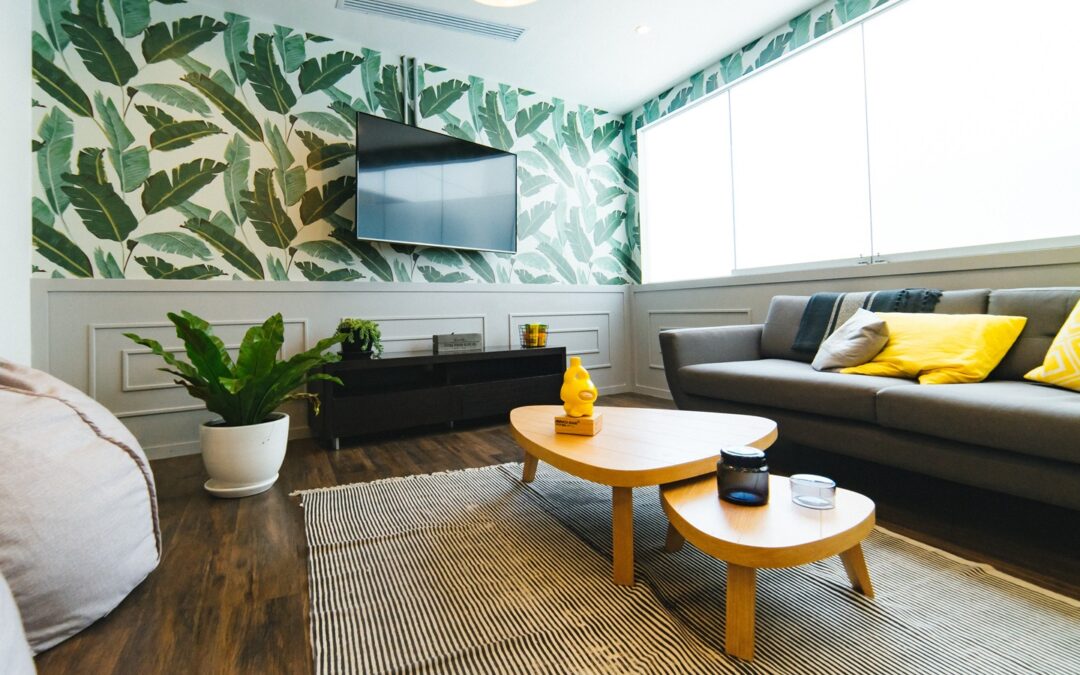Minimalism is often thought to be an American style rising in popularity during the 1960s and 1970s, and many prominent architects, artists, and designers became known during that era. However, the roots of minimalist design can be traced back to post-World War I Europe, specifically Germany and the Netherlands. This is key to understanding the dichotomies of the style.
In Germany, Bauhaus, a school of architecture and design created by Walter Gropius, was a utopian ideology favoring “form follows function” in architecture, design, and materials. Concrete, glass, and steel featured prominently in architecture and furniture. Gropius and other notables of this school of design emigrated to the US in the 1940s, influencing what became the modernism of the 1950s and beyond.
The mantra of minimalists – “less is more” – is a quote from German-American architect Ludwig Mies van der Rohe. He was perhaps the most well-known and influential architect in this style.
De Stilj (translation: the style), in the Netherlands, was an art and architecture movement from 1917 to 1931. The focus was on the vertical and the horizontal and featured only black, white, and primary colors.
Understanding Minimalism
At its core, minimalism is based on reductionism – only the essential makes its way into the design. Like many design aesthetics, minimalism has evolved over time. While Bau Haus and De Stilj focused on “hard” materials – glass, steel, and concrete – and vertical and horizontal planes, they also incorporated bright colors. Bau Haus designs embraced a mix of these with fine arts and crafts. The work of Dutch painter Piet Mondrian is a well-known example of De Stilj.
Stark, Serene or Something in Between?
Somewhere along the line, minimalism became associated with all white or very neutral color palettes and very spare furnishings. Glass, metal and wood still figure prominently in furniture and accessories. Articles promoting minimalism refer to adding a “pop of color used sparingly.” The contemporary philosophy is to create a soothing, restful atmosphere.
Striking a Balance
Modern minimalism strikes a balance between all the historic characteristics of minimalist design.
For example, monochromatic color palettes are often considered a characteristic of a minimalist aesthetic. Monochromatic simply means shades of one color. If serene and peaceful is the atmosphere you want to create, then creams, soft greens or blues, or blush will achieve that. Zen is accomplished with upholstered pieces with uncomplicated curves and warm woods. In relaxed minimalism, more warmth is added with select textured textiles and natural materials in edited accessories.
A completely different facet of minimalism, but no less true to its roots, is a monochromatic room using more intense color. The intensity should be balanced, to be sure, but the color wheel spins freely! Upholstered pieces have clean lines, and wood, glass and metal are featured prominently in tables and cabinetry. Create your own Mondrian effect by painting a door or even a large canvas in a single contrasting color.
Speaking of cabinetry, whichever minimalist style appeals to you, closed storage is a key component. The reality is that there is “stuff” that comes with daily life. Minimalism seeks to limit “stuff’s” intrusion. It can be put away, or with form following function, be attractively useful.
Functional Simplicity
Whatever style of minimalism you choose, there are basic foundational tenets:
- Less is more
- Clutter-free
- Streamlined
- Functionality
- Craftsmanship
- Clean, simple lines
- Maximize natural light
A monochromatic palette is often cited as a core principle, but the De Stilj school of minimalism doesn’t subscribe to that. There is an exciting dynamic created by the focus on the vertical, horizontal and black/white/primary colors color palette. All the other tenets still apply.
Minimalism is more than painting the walls white and adding a few pieces of furniture. It requires thoughtful assessment of what is – and isn’t – included to achieve the balance necessary for a comfortably livable space. You may also use different versions of minimalism in different spaces in your home. For example, the master suite may be serene, the living room relaxed, and the family room or home office more Mondrian. Careful color choices ensure the design still flows throughout the house.
Minimalism vs. Maximalism
Minimalism is often said to be a reaction to and rejection of the excesses of previous generations. Interestingly, they share a few traits. For example, both design styles focus on careful curation of objects. A familiar mantra is “does it spark joy?” The difference is how many of those beloved objects are displayed.
Maximalism is often portrayed as boldly colored, but there is a relaxed maximalism just as there is a relaxed minimalism. Softer, more neutral colors in the former; softer lines and furnishings in the latter.
Modern Minimalism . . .
is about your design aesthetic, creating an uncomplicated comfortable place to land at the end of the day. The basic tenets are guidelines, not rules. Enjoy flexing them to compose a home where you can be both relaxed and inspired!


